Control Line Stooge

Written by Don Ogren. Digital Exclusive Control Line Feature. Also featured in the February 2013 Model Aviation tablet app.
Before I get into the details of my Stooges, let me walk you through the path that brought about the need for and the importance of a good Stooge. I really got started flying Stunt in the mid-1950s, after my stint with the USAF and after I got married. My flying buddies were the Indianapolis Stunt Masters and I had the assistance of my wife, so having someone to hold and launch was no problem. I never thought that someday I would be flying alone –it just never occurred to me. We moved to New York after college, and were attracted to sailing instead of model flying, until about 1997 or 1998. Our oldest son and family, which now included a grandson, moved from New York to Florida in 1997, which more or less attracted us to do the same in 2000. Mike was getting interested in Control Line combat, and I decided to take up Stunt again. He would have liked me to have flown combat with him, but I just did not have that type of competition in my blood or the physical stamina. My first year of Stunt competition was probably 2002, with a scratch-built “Green box” Nobler. By then, I was pushing 70, and my wife had interests of her own which didn’t include helping her old guy fly Control Line two or three times a week, for two to three hours at a time. So that’s when I knew I needed alternative dependable help!
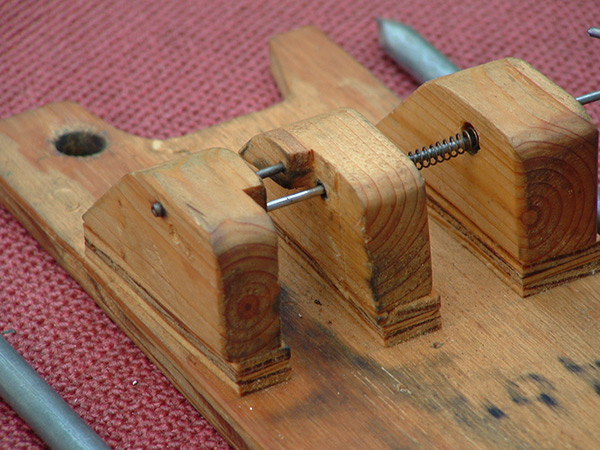
Back in the work shop, my sketch book came up with the needed Stooge. The first one (above was pretty simple, as it captured the tail wheel by the wire, until it is released. That prototype Stooge is still usable to this day, even after being exposed to a fuel soaking of over 500 flights. I used it until 2009. In the fall of 2009, I built a tricycle-geared plane, the Gobbleswantz, designed by Charles Mackey in the late 50s. Without a tail wheel, the first Stooge would not work. So along came Stooge #2, designed to restrain an airplane by the high horizontal stabilizer (below).
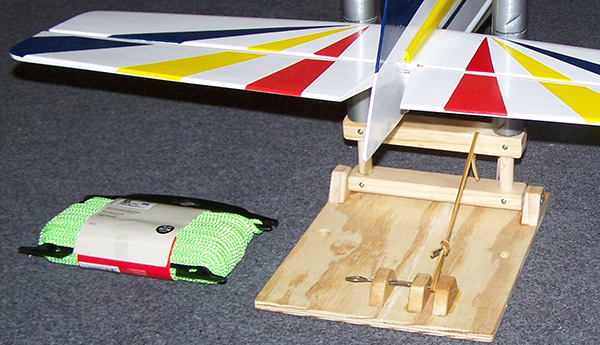
I’ve used that Stooge for two years, and have added another tri-geared model to my fleet. I was demonstrating this Stooge to a modeler at the 2011 CLPA Nationals in Muncie, Indiana, when he expressed an interest in a Stooge that would hold a tail-dragger design by the horizontal Stab instead of the tail wheel. Stooge #2 wouldn’t do that because it had a cross member joining the restraining up-rights together. So it was back to the drawing board as soon as I got home from the Nats. Stooge #3 (below) is the result. Eureka! It definitely obsoletes my first and second designs because this one will serve all purposes, and might be considered to be a “Universal Stooge.” The restraining “yoke” folds flat to the ground upon release, and allows the tail wheel to have a smooth path out of the shoot. Why didn’t I think of that to start with?
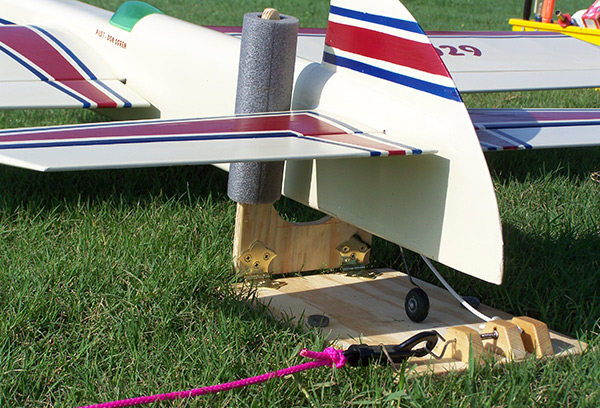
All the Stooges have been pretty simple in design concept, with #2 being a bit more complex as well as more time consuming to build, but it works great. All three designs have utilized the same “trip-and-release” idea that is used by several other Stooges builders. All the Stooges have the same type of hold-downs, large, long tent–type stakes found in the camping supplies section of most Walmart stores. The soil in Florida is mostly soft sand and I can push the stakes into the ground with my foot without too much difficulty, but I prefer using a hammer. I’ve also used these stakes during practice at the Nationals, where the soil is gravel, thus requiring the use of a hammer. As you can see, these Stooges were designed for use on grass circles. Figure below shows the three different Stooge designs, each having a different idea for the launch of a airplane. The “Universal Stooge” is available from this designer for $24, plus $9 Priority USPS.
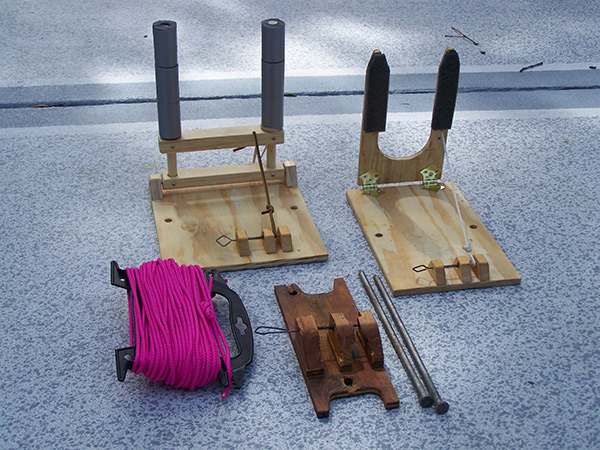
The all-important issue is that a Stooge must be as dependable as a live pit crew. It has to hold a model in place until the pilot is ready. When you’re practicing by yourself, nothing is more important than safety! So there you have it. The wife is now excused from the chore of pit crew. You can download this article as a pdf by clicking here.
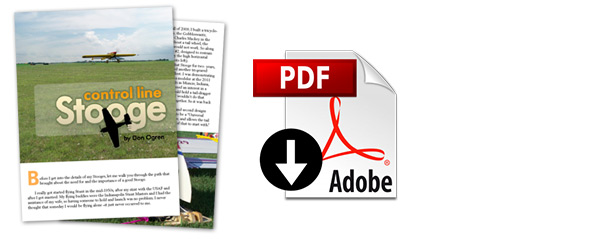 Don Ogren
[email protected]
(352) 428-9171
Don Ogren
[email protected]
(352) 428-9171
Similar Articles
|






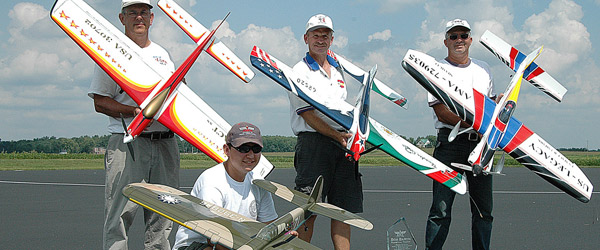
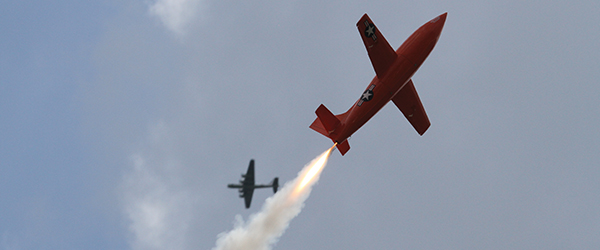





5 comments
The .pdf link is broken
PDF Link Repaired
.pdf link
Thank you!
CL Stooges
Add new comment